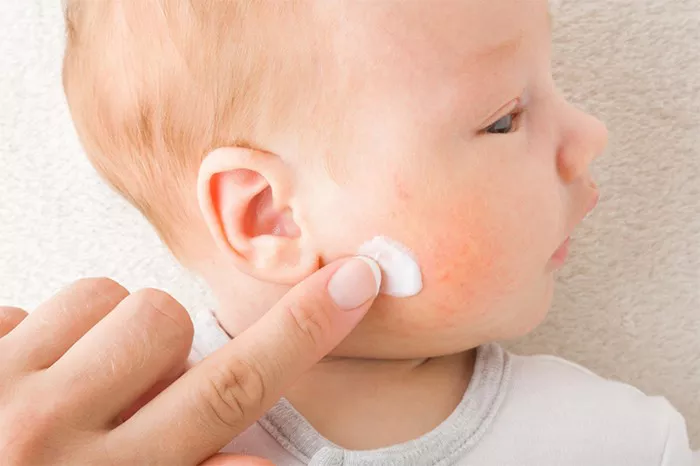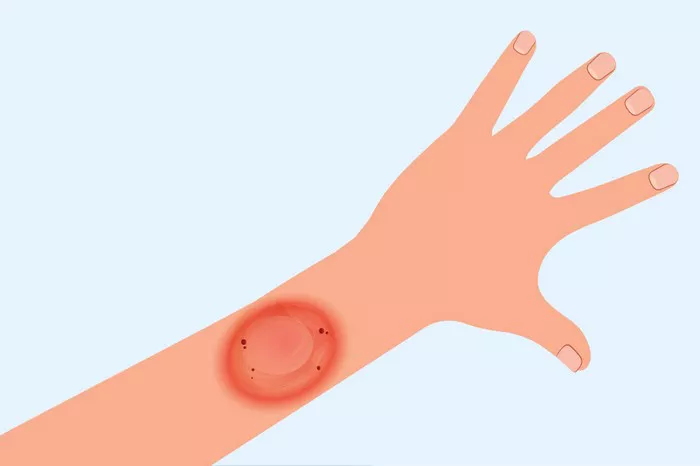Ringworm, medically known as tinea corporis, is a common fungal infection of the skin that causes an itchy, red, and circular rash. It can affect any part of the body, but it is most commonly found on the trunk, arms, and legs.
Ringworm is caused by a fungus that lives on the keratin, a protein found in the skin, hair, and nails. The fungus can be spread through direct contact with an infected person or animal, or through contact with contaminated objects, such as clothing, towels, or bedding.
Understanding Ringworm:
Before delving into the treatment timeline, it’s crucial to grasp the nature of ringworm. This fungal infection is caused by various dermatophyte fungi, primarily belonging to the genus Trichophyton, Microsporum, and Epidermophyton. These fungi thrive in warm, moist environments and can be transmitted through direct contact with an infected person or animal, as well as contaminated objects or surfaces.
Ringworm typically manifests as a red or silver rash with raised edges and a clear center, often resembling a ring or a series of overlapping rings. It commonly affects the skin on the body, limbs, scalp, and groin area, though it can occur virtually anywhere on the body. The condition is usually accompanied by itching, burning, and sometimes blistering of the affected area.
Treatment Options:
The treatment of ringworm usually involves antifungal medications, which can be applied topically or taken orally, depending on the severity and location of the infection. Over-the-counter antifungal creams, lotions, or powders containing ingredients such as clotrimazole, miconazole, or terbinafine are often effective for mild cases of ringworm. These medications work by inhibiting the growth and spread of the fungi, ultimately clearing the infection.
For more severe or widespread cases, prescription-strength antifungal medications may be necessary. Oral medications like fluconazole, itraconazole, or griseofulvin are commonly prescribed to combat stubborn ringworm infections. These systemic antifungals are absorbed into the bloodstream, allowing them to target the fungi internally and provide comprehensive treatment.
In addition to antifungal medications, practicing good hygiene and maintaining a clean, dry environment can aid in the recovery process. Regularly washing and thoroughly drying the affected area, as well as avoiding sharing personal items such as towels, clothing, and sports equipment, can help prevent the spread of ringworm and facilitate faster healing.
Treatment Timeline:
The duration of ringworm treatment can vary depending on several factors, including the severity of the infection, the effectiveness of the chosen treatment method, and individual factors such as immune function and overall health. In general, however, most cases of ringworm can be effectively treated within 2 to 4 weeks with appropriate therapy.
For mild cases of ringworm treated with over-the-counter antifungal creams or lotions, noticeable improvement is often seen within the first week of treatment. The itching and redness associated with the infection typically begin to diminish, and the rash may start to fade as the medication combats the underlying fungi. However, it’s essential to continue treatment for the full duration prescribed, even if symptoms improve, to ensure complete eradication of the infection and prevent recurrence.
In more severe cases or cases involving areas with hair, such as the scalp or beard, treatment may take longer to achieve full resolution. Oral antifungal medications are usually required for these types of infections, and the treatment course may extend to several weeks or even months, depending on the extent of the infection and the individual’s response to therapy. Regular follow-up appointments with a healthcare provider may be necessary to monitor progress and adjust treatment as needed.
Prevention and Recurrence:
Once the ringworm infection has cleared, it’s essential to take steps to prevent recurrence and minimize the risk of reinfection. Practicing good hygiene, including regular handwashing, keeping the skin clean and dry, and avoiding sharing personal items, can help reduce the likelihood of contracting ringworm or spreading it to others.
Individuals who participate in activities that involve close skin-to-skin contact, such as sports or wrestling, should take extra precautions to prevent the spread of ringworm. This may include wearing protective clothing, showering immediately after activity, and regularly cleaning and disinfecting equipment and communal areas.
In addition, pet owners should be vigilant about the health of their animals, as pets can also contract and transmit ringworm. Regular grooming, inspection of the skin and fur for signs of infection, and prompt treatment of any suspected cases can help prevent the spread of ringworm within the household.
Conclusion
In conclusion, ringworm is a common fungal infection that can cause discomfort and embarrassment for those affected. However, with prompt and appropriate treatment, most cases of ringworm can be effectively resolved within 2 to 4 weeks. Over-the-counter antifungal medications are often sufficient for mild cases, while more severe or widespread infections may require prescription-strength oral medications.
Regardless of the treatment approach, it’s essential to follow through with the full course of therapy prescribed by a healthcare provider to ensure complete eradication of the infection and prevent recurrence. Practicing good hygiene and taking steps to prevent the spread of ringworm can further reduce the risk of reinfection and promote overall skin health.
By understanding the treatment timeline and implementing preventive measures, individuals can effectively manage ringworm and minimize its impact on their health and well-being. If symptoms persist or worsen despite treatment, it’s important to consult a healthcare provider for further evaluation and management. With proper care and attention, ringworm can be successfully treated, allowing affected individuals to return to their daily activities with confidence and peace of mind.
























